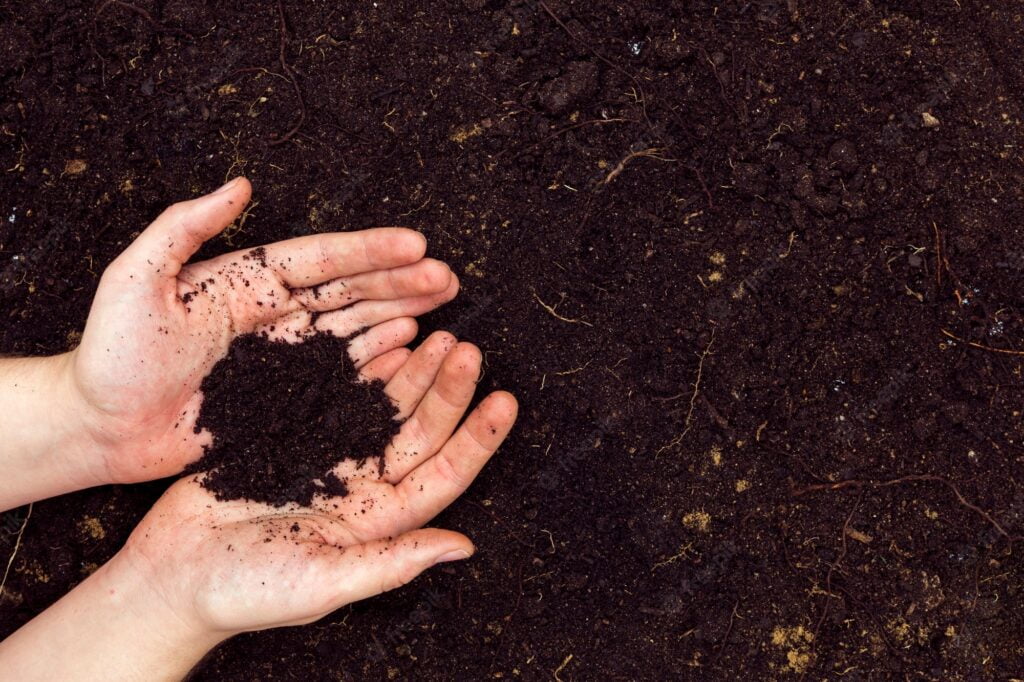Soil pollution: a latent enemy

This content was originally published here by Solena Ag Inc.
At-a-glance:
- Human activities such as agriculture and industrial processes are directly responsible for the release of pollutant substances into the soil and the environment.
- Sustainable soil management ensures safe food production, ecosystem protection, and, thus, our species’ survival.
- For the purpose of solving and preventing soil damage, which threatens the environment and global food security, we must manage eroded soils effectively.
Our access to safe, nutritious, and high-quality food relies on soil health. A polluted soil causes a knock-on effect that jeopardizes the continuity of life as we know it.1
One of the most precious resources we possess is soil, since it provides us with food and raw materials we need in order to survive. Nevertheless, we must remember that, unfortunately, it is not renewable since, from a human perspective, it takes a whole lifetime to restore its productive quality.2
Soil pollution not only has an impact to the environment, but also to every form of life on our planet. Let us just think about the fact that 95% of our food comes directly or indirectly from soils.3
It is estimated that in 2050 there would be 9 billion people on Earth, 9 billion mouths that will need healthy food.4 However, agriculture and industrial activities have left us with polluted and unproductive soils.
A latent danger
When we hear the word ‘pollution’, usually the images that pop in our heads are big smoke puffs produces by cars or factories, and rivers clogged with garbage or toxic chemicals. It is more common for us to hear about water and air pollution, because we can identify its effects more easily. Yet, that’s not the case with soil pollution, given that we cannot see how the toxins enter into the soil.
However, this fact doesn’t make it less hazardous. A third of the planet’s soils are already damaged, and we are risking to lose even more of them if we don’t apply methodologies that help us recover and take care of this resource.5
Soils are considered to be polluted when the amount of toxic chemicals in them is such that it poses a risk to human health and the ecosystem.6 The source of those harmful chemicals is found in human activities, including unsustainable farming practices, industrial operations, mining, and the lack of waste management.7 In agricultural practices, the excessive and rampant use of fertilizers and pesticides is the main cause of polluted soils.8
The consequences of soil pollution
This global issue puts the agricultural production and the environment at risk, as affirmed by the Food and Agriculture Organization of the United Nations (FAO) delegate, Hussein Gadain, during the celebrations of the World Soil Day in Egypt.9 There is a close relation between food safety and the amount of pollutants in soils.10 This type of pollution, however, also affects the safety of the water we drink and the air we breathe.
A polluted soil impacts the environment in three different ways:11
- Pollutants stick to dry soil particles. When the wind rises, those contaminated particles end up floating in the air and they may be inhaled by humans or animals.
- When rain or underground water reaches the soil it can dissolve and carry the pollutants in it. This polluted water ends up in water sources meant for human or animal consumption, or crop irrigation.
- Crops growing in those soils absorb pollutants, then store them in their tissue. Those toxins can get into the human or animal organism when ingested. The risk is higher if the water they are irrigated with is also contaminated.
People who feed on meat from animals that consumed polluted food or water may suffer from poisoning or even cancer.12 In order to develop effective solutions to this problem, it is crucial to understand how pollutants enter into the soil and what consequences would it bring.
Agrochemicals and its impact on soil pollution
On a global scale, the use of agrochemicals has reached record levels due to the great demand on food. Although they are intended to increase land productivity or to get rid of plagues, they cannot be broken down naturally because they are synthetically produced. When they filter into the soil, these chemicals jeopardize its fertility and change the natural composition of plants and reduce the content of organic matter in the topsoil.13
The reduction of organic matter makes it easier for the pollutants to enter the food chain.14 As stated, all of the nature’s processes are interlinked: a polluted soil releases toxins in the underground water, which are later stored in plant tissue, moving toward grazing animals and finally to humans that feed on those plants and meat.
Beyond the environmental and nutritional impact, this worldwide challenge also represents losses on the economic development of some countries, due to the reduction of crop quality. According to data from FAO, 127 billion dollars were lost in Africa because of soil pollution.15
How to take care of soils
Since most of the pollutants are a result from human activities, we are directly responsible for the damages. Thus, for the sake of a future where we can access to safe food and a pollution-free environment, it is essential to cultivate good habits.16 Gadain stresses that treating our soils sustainably is not an option anymore, but a must to preserve life on our planet.17
Applying sustainable farming methods is therefore imperative for taking care of soils and benefiting from its biological capital. If you are a farmer, it is always advisable to run a soil analysis before growing food, especially if your production area is near an industrial or mining zone, or 1 mile away from an airport, bay, landfill or foundry.18
Preventing this pollution must be a global priority. By being aware of its causes, it is possible to find and apply effective solutions to this problem. Protecting and preserving our soils is a task for everyone. We can do our bit by choosing to consume and produce sustainable food, reducing our waste by making compost, or even sharing this information with our community and raising awareness about this challenge. On a larger scale, we must promote and demand the application of sustainable farming methods.
If we take care of soils, they will repay us with safe and clean food, water and air. Be the solution to stop soil pollution!19
References
1, 2, 14, 16 http://www.fao.org/fao-stories/article/es/c/1126977/
6, 18 https://www.environmentalpollutioncenters.org/soil/
4, 7, 9, 15, 17 http://www.fao.org/egypt/news/detail-events/en/c/1173563/
3, 5 http://www.fao.org/3/ca3957en/ca3957en.pdf
10 http://www.fao.org/3/I8411EN/i8411en.pdf
11, 12 https://sciencing.com/consequences-soil-pollution-2558.html
13 https://www.conservationinstitute.org/soil-pollution/
13 https://dspace.ups.edu.ec/bitstream/123456789/14712/1/UPS-CT007228.pdf

